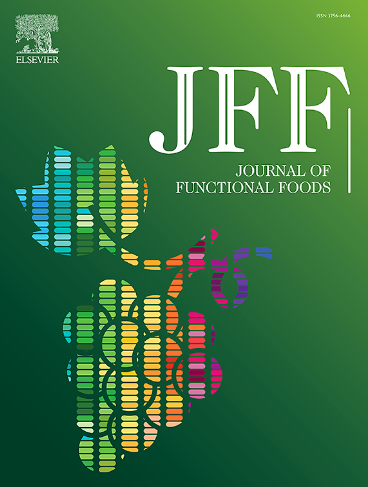桃红四物汤通过 SIRT1/FOXO1 信号通路改善脑缺血再灌注损伤
IF 3.8
2区 农林科学
Q2 FOOD SCIENCE & TECHNOLOGY
引用次数: 0
摘要
背景缺血性卒中(IS),一般称为脑梗死(CI),是一种高危卒中。脑梗死后,血管需要重新开放,在此期间容易发生脑缺血再灌注损伤(CIRI)。桃红四物汤是一种活血化瘀的传统中药配方。方法我们基于沉默信息调节因子 1/叉头盒蛋白 O1(SIRT1/FOXO1)信号通路,观察了桃红四物汤对大脑中动脉闭塞再通(MCAO/R)大鼠和氧糖剥夺/再氧合(OGD/R)损伤后 PC12 细胞的保护作用。我们从氧化应激、自噬和细胞凋亡的角度探讨了 SIRT1/FOXO1 信号通路对缺血性脑卒中(IS)使用 THSWD 的作用及其机制。实验工具包括神经功能缺损评估、染色、Tunel 检测、透射电子显微镜、流式细胞术、免疫荧光、免疫组织化学和 Western 印迹。结论 THSWD 可通过调节 SIRT1/FOXO1 信号通路改善 CIRI。本文章由计算机程序翻译,如有差异,请以英文原文为准。

Taohong Siwu Decoction improves cerebral ischemia–reperfusion injury through SIRT1/FOXO1 signaling pathway
Background
Ischemic stroke (IS), generally referred to as cerebral infarction (CI), is a high-risk stroke. After CI, blood vessels need to be reopened, and cerebral ischemia–reperfusion injury (CIRI) is prone to occur during this period. Taohong Siwu Decoction (THSWD) is a traditional Chinese herbal formula that has been used to activate blood circulation and remove blood stasis. It has been confirmed that THSWD can improve CIRI caused by ischemic stroke, but its specific mechanism is not clear.
Methods
We observed the protective effect of THSWD on rats that had undergone middle cerebral artery occlusion and reperfusin (MCAO/R) and PC12 cells after oxygen glucose deprivation/re-oxygenation (OGD/R) injury based on the silent information regulator 1/forkhead box protein O1 (SIRT1/FOXO1) signaling pathway. We explored the role of the SIRT1/FOXO1 signaling pathway on the use of THSWD for ischemic stroke (IS) and its mechanism from the perspectives of oxidative stress, autophagy and apoptosis. Experimental tools included neurological deficit assessment, staining, Tunel assay, transmission electron microscopy, flow cytometry, immunofluorescence, immunohistochemistry, and Western blot.
Results
We detected activation of the SIRT1/FOXO1 signaling pathway after THSWD administration on MCAO/R rats and PC12 cells after OGD/R. THSWD attenuated oxidative stress, enhanced autophagy, and inhibited apoptosis.
Conclusion
THSWD can improve CIRI by modulating the SIRT1/FOXO1 signaling pathway.
求助全文
通过发布文献求助,成功后即可免费获取论文全文。
去求助
来源期刊

Journal of Functional Foods
FOOD SCIENCE & TECHNOLOGY-
CiteScore
9.60
自引率
1.80%
发文量
428
审稿时长
76 days
期刊介绍:
Journal of Functional Foods continues with the same aims and scope, editorial team, submission system and rigorous peer review. We give authors the possibility to publish their top-quality papers in a well-established leading journal in the food and nutrition fields. The Journal will keep its rigorous criteria to screen high impact research addressing relevant scientific topics and performed by sound methodologies.
The Journal of Functional Foods aims to bring together the results of fundamental and applied research into healthy foods and biologically active food ingredients.
The Journal is centered in the specific area at the boundaries among food technology, nutrition and health welcoming papers having a good interdisciplinary approach. The Journal will cover the fields of plant bioactives; dietary fibre, probiotics; functional lipids; bioactive peptides; vitamins, minerals and botanicals and other dietary supplements. Nutritional and technological aspects related to the development of functional foods and beverages are of core interest to the journal. Experimental works dealing with food digestion, bioavailability of food bioactives and on the mechanisms by which foods and their components are able to modulate physiological parameters connected with disease prevention are of particular interest as well as those dealing with personalized nutrition and nutritional needs in pathological subjects.
 求助内容:
求助内容: 应助结果提醒方式:
应助结果提醒方式:


